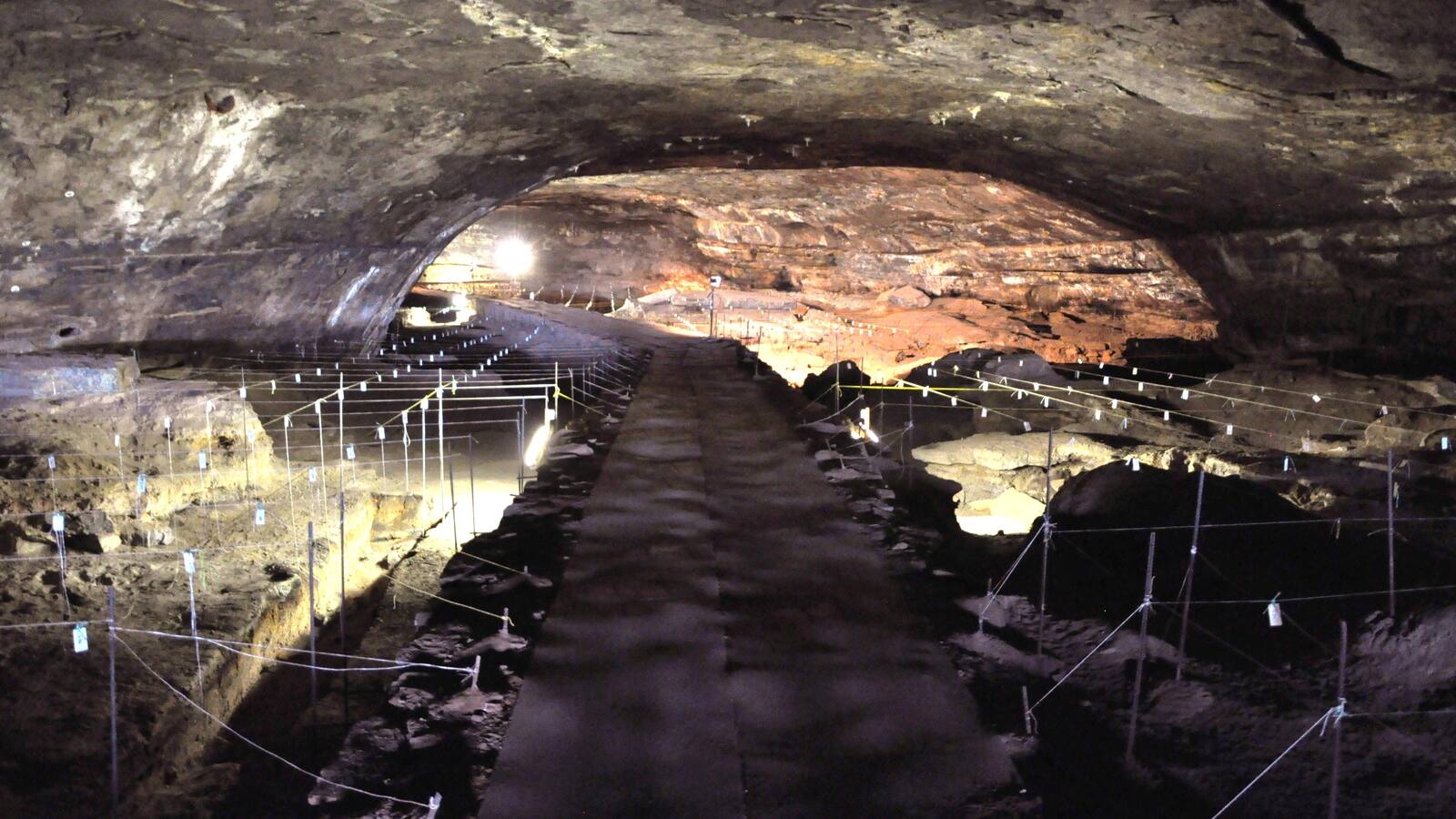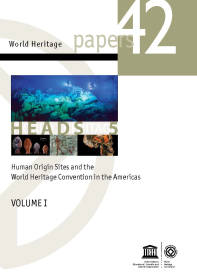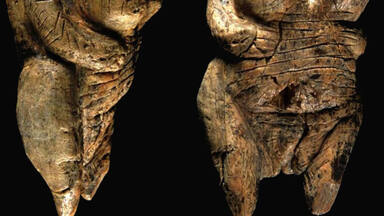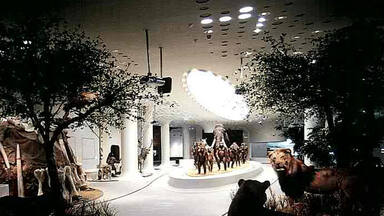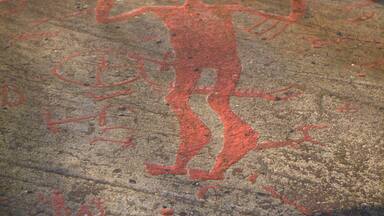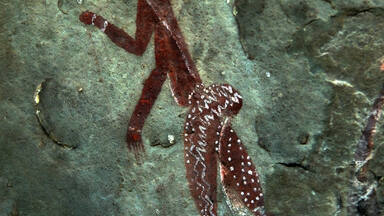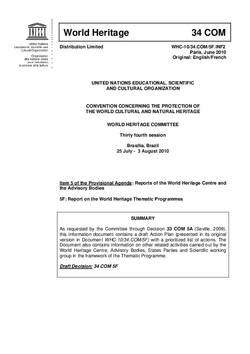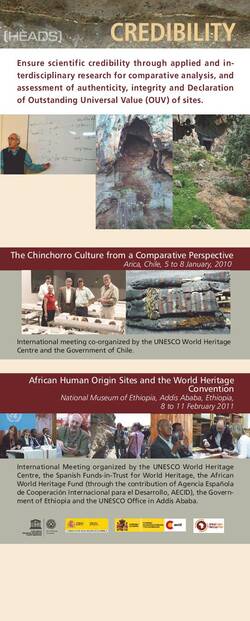Human Evolution related properties represent a process of evolutionary accretion that took place over a vast period of time, offering vital insight to scientific, cultural, ethological and historical dimensions of human development, and the earliest evidence of human ritual, expression and practice.
We find the record increasingly valuable as our inherited storehouse of knowledge about the foundations and diversity of human life, experience, and social behavior as well as modes of early human adaption in response to environmental and climatic influences. This precious knowledge rests at the core of understanding human lineage and the origins of our cultural diversity, as well as its continuity today.
As a global phenomenon, the properties are not geographically exclusive, and require an inclusive and comprehensive approach in terms of their study and conservation. The nature of the properties necessitates a strong cooperation between the fields of both science and culture to inform a deeper understanding of our cultural origins.
Types of properties:
- Deposits useful for the reconstruction of palaeo-environments;
- Deposits with human remains, including intentional ones such as burials, burial mounds and megalithic graves;
- Evidence of human occupation, use and modification of caves or rock shelters, be it ephemeral or long-standing, such as in tells, and monumental or scarcely visible, such as kill and butchery sites;
- Mining sites, quarries and refuse deposits;
- Caches, campsites and abandoned or lost equipment;
- Artificial modification of the environment, as in hunting, fishing and drainage systems, ditches and enclosures, salt working sites, pottery production;
- Long-sequence evolutive landscapes related to hunter-gatherer communities;
- Places with intangible values related to criteria (vi) and associative cultural landscapes, such as palaeo landscapes and rock art sites;
- Sites important for the history of science;
- Sites related to human mobility and traces of long-term repeated human movement;
- Sites related to trade;
- Rock Art Sites.
The development of the HEADS Programme is directed toward defining and establishing a solid strategy of cooperation and implementation to ensure the future recognition, conservation and study of these early vulnerable sites in relation to World Heritage. HEADS is financed by the Spanish Funds-in-Trust for World Heritage.The Action Plan for the Programme was approved by the 34th Session of the World Heritage Committee in Decision WHC-10/34.COM/5F (Brasilia, 2010), with a prioritized list of actions for implementation. The key objectives of the Action Plan are:
- i. Establish links between scientific research and integrated conservation by recognizing the scientific values of properties related to human origins;
- ii. Operate within the framework of the Global Strategy, launched by the World Heritage Committee in 1994, to broaden the definition of World Heritage in better reflecting the full spectrum of the world's cultural and natural sites of outstanding universal value;
- iii. Recognize sites that are outstanding demonstrations of traces of the earliest interaction between humankind and the land, early cultural behaviour, cognitive steps and creative expressions;
- iv. Preserve the identified properties from progressive deterioration due to their ancient chronology and vulnerable fabric through scientific analysis and the application of conservation plans;
- v. Develop collaborative, outreach and sustainable initiatives through fostering networks with Advisory Bodies, States Parties, National Commissions, and national and international institutions to implement the Action Plan.
Since the programme's inception in 2006 the activities have been focused in 3 core thematic areas:
Decisions / Resolutions (4)
The World Heritage Committee,
- Having examined Document WHC-14/38.COM/5E,
- Recalling Decisions 32 COM 10, 32 COM 10A, 34 COM 5F.1, 36 COM 5D and 36 COM 5E, adopted at its 32nd (Quebec City, 2008), 34th (Brasilia, 2010) and 36th (Saint Petersburg, 2012) sessions respectively,
- Welcomes the progress report on the implementation of the World Heritage Thematic Programmes and Initiative and thanks all States Parties, donors and other organizations for having contributed to achieving their objectives;
- Acknowledges the results attained by the Forest Programme and expresses its regrets that no extrabudgetary funding could be secured and asks the World Heritage Centre to explore alternative options before phasing out the Programme;
- Notes the importance of the World Heritage Cities Programme and underlines the relevance of the Recommendation on the Historic Urban Landscape to provide a comprehensive and thorough framework for cities’ urban planning, conservation and sustainable development;
- Takes note that the follow-up of the HEADS Programme will be ensured in the framework of extra-budgetary projects, through extra-budgetary funding secured by the UNESCO Mexico Office from the Carlos Slim Foundation, and in coordination with the Category 2 Centre on Rock Art (Spain) and requests that the outcomes of the projects be reported to the World Heritage Committee;
- Also takes note of the results achieved by the Earthen Architecture Programme and the lack of extra-budgetary resources; further takes note that the programme will be pursued, provided that extra-budgetary funding can be secured, with the assistance of Advisory Bodies and external partners, and encourages stakeholders to ensure the follow-up of the Programme and continue supporting research and other activities in order to assist States Parties in identifying and protecting relevant sites;
- Notes the results achieved in the implementation of the Astronomy and World Heritage Initiative as well as the lack of extra-budgetary funding; also notes that the World Heritage Centre will continue basic coordination with its strategic partners, communicate the results achieved by the Advisory Bodies and other partners, and will provide advice to States Parties as requested; and also encourages stakeholders to ensure the follow-up of the Initiative and continue supporting research and other activities to assist States Parties in identifying and protecting relevant sites;
- Welcomes the progress made in the implementation of the World Heritage Sustainable Tourism Programme and in securing the extrabudgetary funding and encourages the States Parties to participate in the Programme with national activities;
- Acknowledges the results of the World Heritage Programme for Small Island Developing States (SIDS), which has been beneficial to all regions and continues to achieve its key objectives;
- Also requests the World Heritage Centre and the Advisory Bodies, with the support of interested States Parties, to continue efforts to implement the activities foreseen under the remaining Thematic Programmes in 2014-2015;
- Further encourages States Parties, international organizations and donors to contribute to the Thematic Programmes and Initiatives and further requests the World Heritage Centre to submit an updated result-based report on Thematic Programmes and Initiatives for examination by the World Heritage Committee at its 40th session in 2016.
The World Heritage Committee,
1. Having examined Documents WHC-10/34.COM/5F and WHC-10/34.COM/INF.5F.1 and WHC-10/34.COM/INF.5F.2,
2. Takes note, with satisfaction, of the progress made in the implementation of the World Heritage Thematic Programmes;
3. Commends the important contribution of the international Scientific Working Group, States Parties and Advisory Bodies in the development of World Heritage Thematic Programme on Prehistory and approves the suggestion of the Drafting group to revise the name of the World Heritage Thematic Programme on Prehistory as "Human Evolution : Adaptations, Dispersals and Social Developments (HEADS)";
4. Also takes note of the activities organized by the States Parties within the framework of the Thematic Initiative "Astronomy and World Heritage", and requests the World Heritage Centre to disseminate the Thematic Study on Astronomical Heritage jointly prepared by ICOMOS and the IAU Working Group, in conformity with its Decision 32 COM 10A, among the States Parties;
5. Notes the activities undertaken to progress the implementation of the framework of the Marine World Heritage Thematic Programme and the Bahrain Action Plan, and thanks the relevant States Parties, IUCN and the World Heritage Centre for their involvement to date.
6. Also thanks the States Parties having supported the implementation of the World Heritage Thematic Programmes;
7. Further takes note , in particular, of the contribution of the other World Heritage Thematic Programmes and Initiatives to the implementation of its Strategic Objectives and also requests the Director of the World Heritage Centre to identify extra budgetary funding and ensure adequate staffing for their continued development on key World Heritage conservation issues;
8. Also notes the concerns expressed regarding the need for economies of scale, particulary in relation to SIDS and takes this into account within the execution of these programmes;
9. Further requests the World Heritage Centre to present a progress report on the Thematic Programmes at its 36th session in 2012.
Read more about the decisionThe World Heritage Committee,
1. Having examined Documents WHC-09/33.COM/5A, WHC- 09/33.COM/INF.5A.1, WHC-09/33.COM/INF.5A.2, and WHC-09/33.COM/INF.5A.3,
2. Recalling Decision 32 COM 5 adopted at its 32nd session (Quebec City, 2008),
3. Takes note with appreciation of the activities undertaken by the World Heritage Centre over the past year in pursuit of the Committee's five Strategic Objectives;
4. Takes also note of the findings of the study undertaken by UNESCO's Internal Oversight Service on the mapping of the workload of the World Heritage Centre presented in Document WHC-09/33.COM/INF.5A.3;
5. Notes with satisfaction that the World Heritage Centre is working with the secretariats of intergovernmental committees of related conventions such as the Convention for the Safeguarding of Intangible Cultural Heritage, and the Convention for the Protection of the Underwater Cultural Heritage-2001 and recommends that such cooperation be encouraged as this would further strengthen the work of the Centre;
6. Requests the World Heritage Centre to prepare a document on the World Heritage Convention and its cooperation and exchange with other conventions and programmes in the field of cultural heritage for discussion at the 34th session of the World Heritage Committee (2010);
7. Also requests the World Heritage Centre, in future reports on activities undertaken, to further strengthen the information and analysis available to States Parties by:
a) Retaining the current format to report activities and including an update on progress with implementing the Committee's decisions,
b) Describing the criteria by which the World Heritage Centre makes decisions as to which activities under the Convention it undertakes,
c) And including, on a discretionary basis, analysis of strategic issues and new directions;
8. Further requests the World Heritage Centre to produce, on an experimental basis, an indexed audio verbatim recording of the proceedings of the 33rd Session in addition to the standard summary records (as produced since the 26th session of the World Heritage Committee);
9. Notes the outline provided by the World Heritage Centre of its roles and the roles of the Advisory Bodies and agrees that this topic be further discussed at the 34th session of the Committee in 2010 under a separate agenda item;
10. Requests furthermore the World Heritage Centre to outline the forward direction of the World Heritage thematic programmes and initiatives, to enable an understanding of how these themes connect with and integrate into general programmes, and how they might be resourced;
11. Notes that the Centre already proactively engages women in its Heritage Programmes in Asia, Africa and the Caribbean as part of its gender balance policy and the provision of equal opportunity to all, and recommends that gender balance and community involvement be prioritized in the Centre's programmes;
12. Adopts the World Heritage Thematic Programme on Prehistory presented in Annex 1 of document WHC-09/33.COM/5A;
13. Requests the World Heritage Centre to reconsider the term "prehistory", to better recognize the continuing cultures of indigenous communities, to ensure global representation in the identification and conservation of related properties, and to present a report on progress in developing an Action Plan on Prehistory and World Heritage at its 34th session in 2010;
14. Notes with concern the ongoing destruction of some of these fragile sites, including the recent destruction of the Rock Art sites of Tardrat Acacus in Libya, and requests the State Party to take immediate action and other measures as necessary to address the problem in consultation with the World Heritage Centre and to invite a joint World Heritage Centre / ICOMOS mission;
15. Expresses its gratitude to the Governments of Bahrain, South Africa and Spain for the financial and technical support for the various international scientific encounters, and recognizesthe proposal of the Government of Spain in establishing a centre for the research of Prehistory;
16. Recalling the Decision of the World Heritage Committee 31 COM.21C to carry out a programme of sustainable development concerning the conservation of earthen architecture, thanks the Governments of Italy and France for their support of the programme on earthen architecture in Africa and the Arab States in particular, and requests the potential financial donors and the States Parties to support the implementation of activities and further requests the World Heritage Centre to submit a progress report at its 35th session in 2011;
17. Takes note of the progress report on the World Heritage Tourism Programme;
18. Thanks the Governments of Australia, China, France, India, Switzerland and United Kingdom, who have worked in close collaboration with the World Heritage Centre and the Advisory Bodies, the World Tourism Organization and other partners, for contributing to the Initiative of Sustainable Tourism;
19. Expresses its gratitude to the Governments of Australia and China for the organization of a workshop on sustainable tourism at the World Heritage site, Mogao Caves, China, in September-October 2009 and requests that the following elements be submitted to the Committee for examination at its 34th session in 2010:
a) A report on the workshop,
b) The subsequent recommendations of the workshop regarding the adoption of best practices policy guidance, and concerning the changes proposed for the Operational Guidelines for the implementation of the World Heritage Convention,
c) A document concerning the progress of the World Heritage Programme on Tourism;
20. Finally requests the Director of the World Heritage Centre to identify supplementary sources of funding to put into place a sufficient number of staff and resources at the World Heritage Centre and the Advisory Bodies in order to continue to efficiently contribute to the resolution of problems related to World Heritage conservation.
Read more about the decisionThe World Heritage Committee,
1. Having examined Document WHC-08/32.COM/10A,
2. Recalling Decisions 31 COM 13 and 31 COM 17 adopted at its 31st session (Christchurch, 2007),
3. Thanking the Government of the United Kingdom for having hosted the Science and Technology expert workshop, which took place from 21 to 23 January 2008 in London, as well as all the experts who contributed to it,
4. Noting the results and recommendations of the Science and Technology expert workshop within the framework of the Global Strategy,
5. Takes note of the progress report on the global thematic studies undertaken by ICOMOS and IUCN;
6. Requests IUCN and ICOMOS to continue to develop their work on thematic studies, in relation to priorities identified in Document WHC-08/32.COM/10A;
7. Noting the underfunding of this significant activity for identifying properties with or having potential Outstanding Universal Value;
8. Takes note of the need for additional resources to be provided to support priority work by ICOMOS and IUCN on thematic studies, including updating existing studies, the application of criterion VII and new initiatives, and to promote their effective use by States Parties;
9. Invites States Parties to the Convention to consider providing extra-budgetary assistance to support the work outlined in paragraphs 6 and 7 above;
10. Thanks the government of France for its generous offer to fund a thematic study on Agro-pastoral Cultural Landscapes.
11. Thanks the government of Spain for its generous offer to fund a thematic study on prehistoric sites;
Read more about the decision